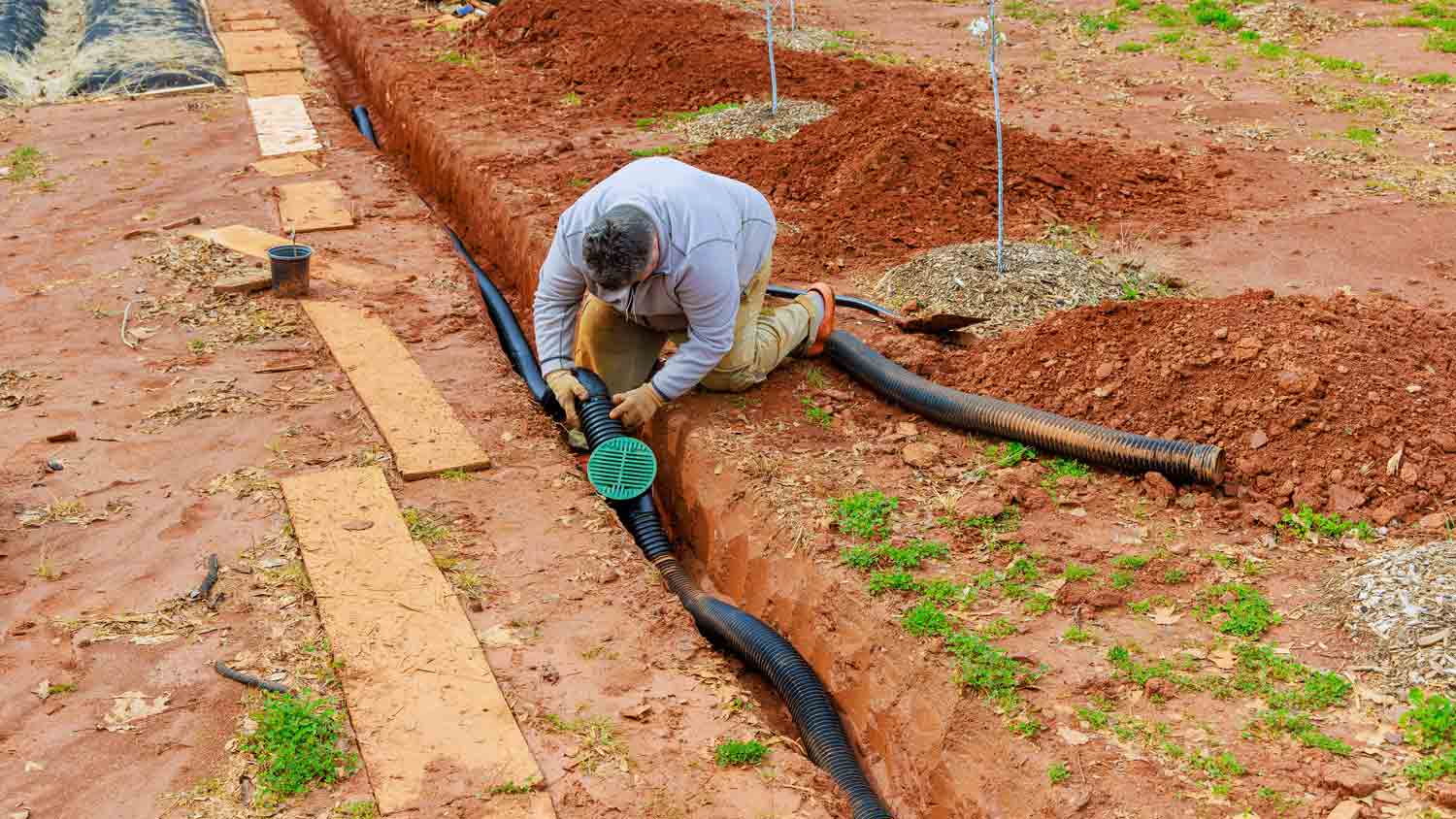
Wondering who installs trench drains? See who to call—excavation companies, plumbers, or landscapers—plus costs and how pros get it done
The average trencher rental costs $280 per day
Most daily rental rates for trenchers range from $120 to $400, with a national average of $280.
Budget-friendly options start at $100, while premium equipment can cost up to $620.
Your final price will depend on equipment type, rental duration, fuel needs, delivery options, and regional market factors.
For single-use projects, such as irrigation installation or utility work, renting often makes more financial sense than purchasing.
This article was created using automation technology and thoroughly fact-checked and edited by HomeAdvisor Editor Ryan Noonan.
A trencher is a specialized piece of equipment designed to create narrow channels in the ground for pipes, cables, and drainage systems. Homeowners looking to rent this equipment can expect to pay between $120 and $400 per day. This guide examines the various price factors and considerations to help you properly budget for your trenching project.
When renting a trencher, your total costs will vary depending on the type of trencher you need, the rental period, fuel costs, and your location.
The two primary trencher categories offer different capabilities and come with distinct price points. Smaller walk-behind units are well-suited for residential projects, while larger ride-on equipment is better suited for more demanding commercial applications. Less experienced operators often find walk-behind trenchers more manageable.
| Equipment Category | Daily Rate Range | Ideal Applications |
|---|---|---|
| Standard walk-behind | $100–$400 | Residential irrigation, cable lines, and modest projects |
| Heavy-duty ride-on | $320–$620 | Commercial projects, extensive properties, challenging terrain |
The duration of your rental has a significant impact on your overall cost. Longer rental terms offer better daily rates, making them more economical for extended projects. Choose your rental period based on realistic project timelines:
Half-day: Economical for very small, straightforward trenching jobs.
Single-day: Suitable for moderate residential projects, complete within eight to 10 hours.
Weekly package: Cost-effective for multi-day projects requiring consistent equipment access.
Monthly agreement: The most economical choice for extensive or long-term trenching needs.
| Rental Period | Average Price |
|---|---|
| Half-day (4 hrs) | $210 |
| Single day | $280 |
| One week | $980 |
| Full month | $2,450 |
Your rental fee often excludes fuel expenses. Smaller trenchers usually run on gasoline, while larger models frequently use diesel. Your actual fuel consumption will vary based on operating conditions, soil type, and project duration.
Getting the equipment to your property often incurs additional fees. Delivery charges depend on distance, equipment size, and accessibility. Self-transport may be possible for smaller units if you have an appropriate vehicle, potentially saving on delivery costs.
Your geographic location plays a significant role in determining rental rates. Metropolitan areas often feature more competitive pricing due to the availability of multiple rental options, while rural locations may have fewer providers and potentially higher rates. Seasonal demand can also affect availability and pricing in your region.
When deciding between DIY and professional trenching, consider both financial and practical factors. While renting equipment costs an average of $280 per day, local trenching services average $5.75 per linear foot, meaning a 100-foot trench would cost approximately $575 to $1,200.
If your project requires precise grading or complex layouts, you’ll benefit from professional expertise. Professional contractors are familiar with utility mapping and safety protocols for hazardous conditions, enabling them to complete projects more efficiently than first-time users. Professional services also often include warranties on workmanship and project outcomes.
Beyond the basic trencher rental, your project may require additional services or equipment. These supplementary costs should be factored into your overall budget planning.
Related projects that often accompany the cost of trenching work include:
Installing a drainage system costs $2,100 to $7,100
Replacing water lines costs $650 to $2,800
Installing sewer connections costs $1,400 to $5,700
Setting up irrigation systems costs $1,600 to $3,600
To keep your trenching project budget-friendly, consider the following tips:
Schedule your project during favorable seasons when ground conditions are optimal for digging.
Request quotes from several equipment rental providers to secure competitive pricing.
Calculate your project timeline accurately to avoid unnecessarily extending your rental.
Complete all preparation work before the rental period begins to maximize productive time.
Consider professional services for complex projects where expertise is more economical.
No place is more important than your home, which is why HomeAdvisor connects homeowners with local pros to transform their houses into homes they love. To help homeowners prepare for their next project, HomeAdvisor provides readers with accurate cost data and follows strict editorial guidelines. After a project is complete, we survey real customers about the costs to develop the pricing data you see, so you can make the best decisions for you and your home. We pair this data with research from reputable sources, including the U.S. Bureau of Labor Statistics, academic journals, market studies, and interviews with industry experts—all to ensure our prices reflect real-world projects.
From average costs to expert advice, get all the answers you need to get your job done.

Wondering who installs trench drains? See who to call—excavation companies, plumbers, or landscapers—plus costs and how pros get it done

Find who can dig a trench for me and who to hire. Learn pro benefits, DIY costs, and when to call an excavation expert

Who to hire to clear land? Learn when to call specialists vs arborists or mulchers, what it costs, and how pros get it done safely.

If you need to clear a plot of land, you can expect to budget based on the lot size, amount of vegetation, permits, and more.

Learn how to budget for an excavation project, exploring how factors such as size, soil conditions, labor rates, and cleanup costs affect the final price.

Budget for oil tank removal costs based on factors such as tank location, size, type, soil testing, professional labor, and more.